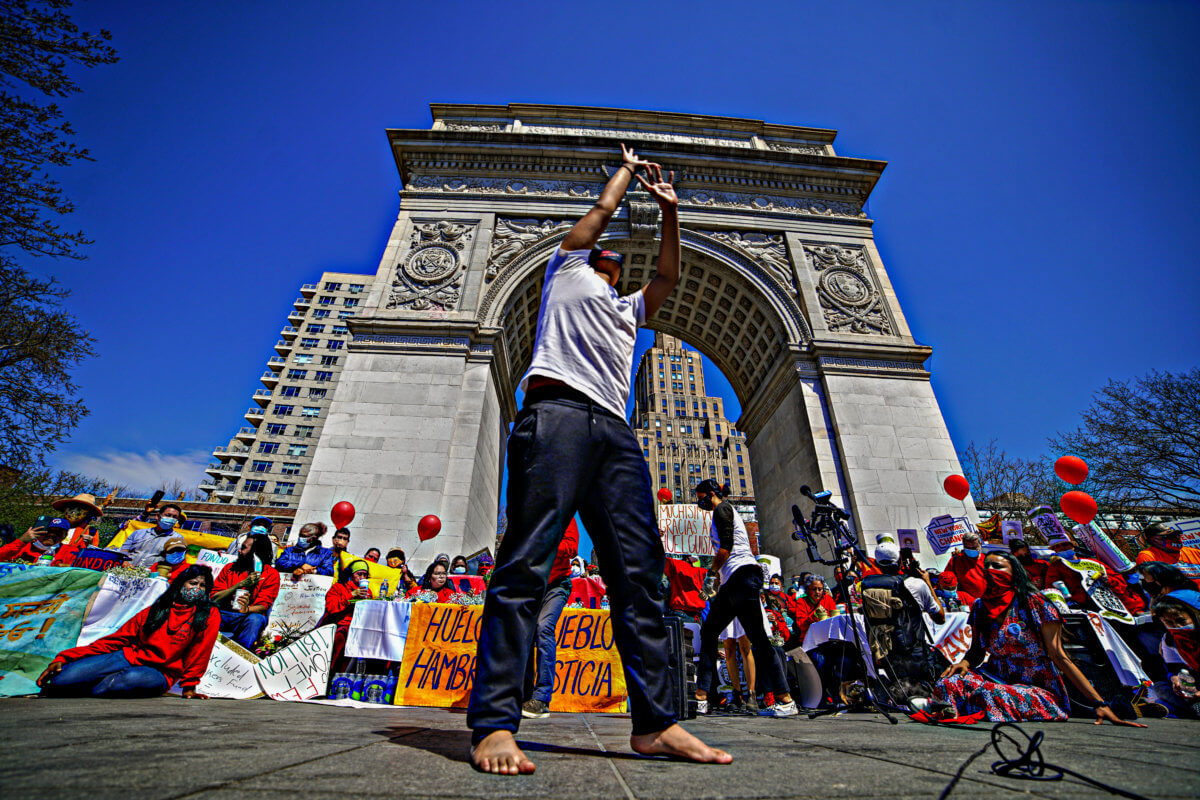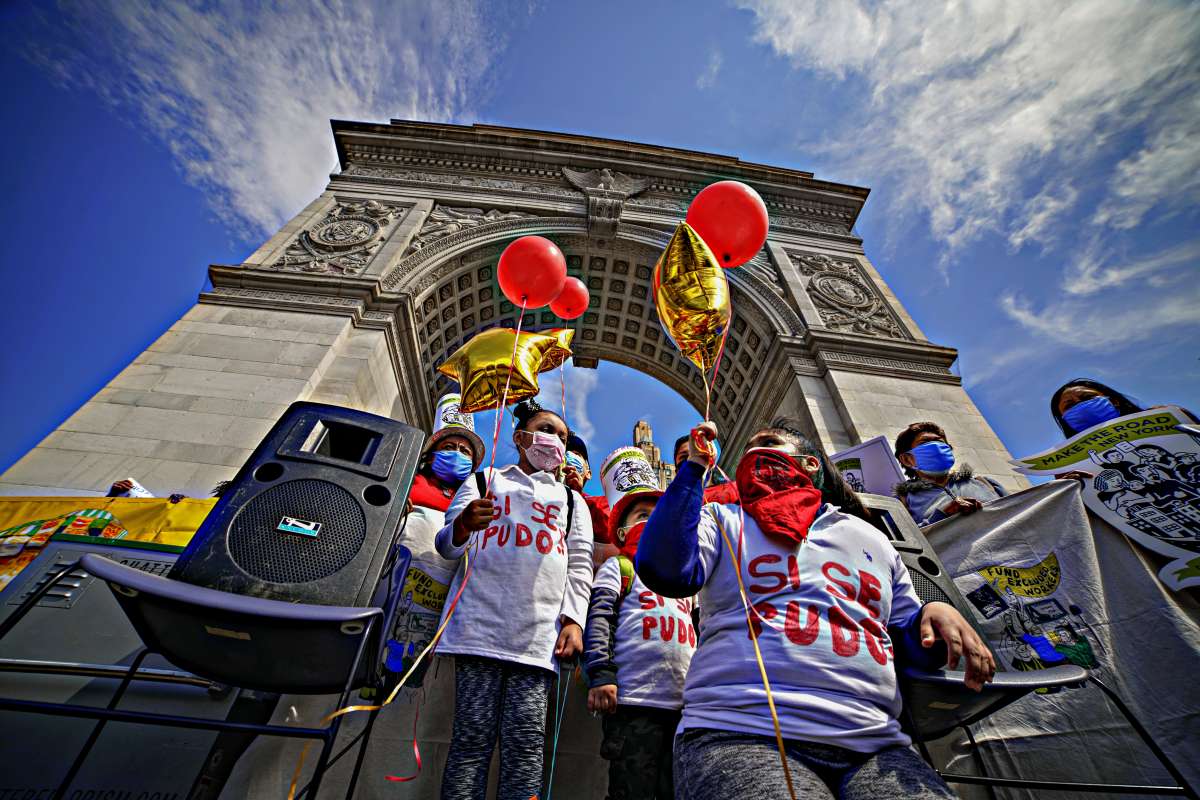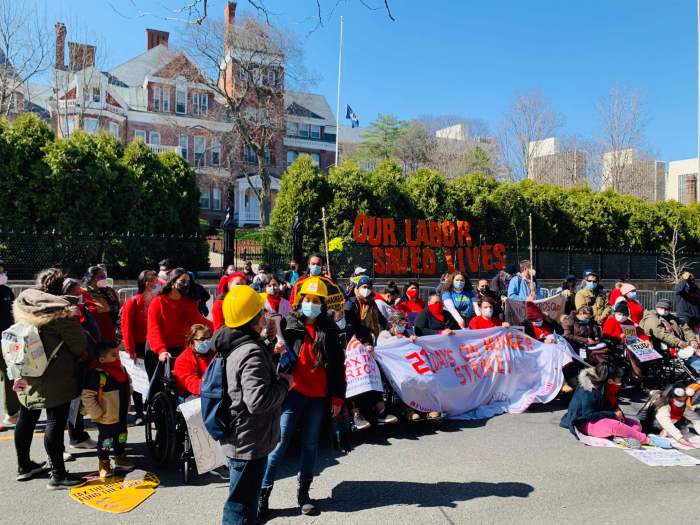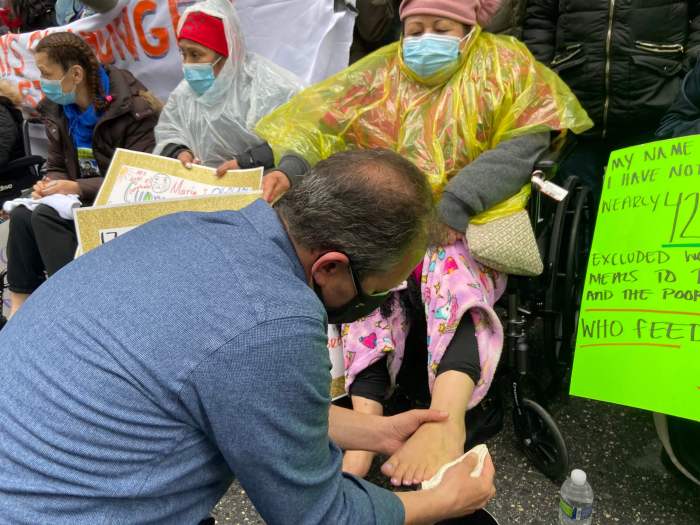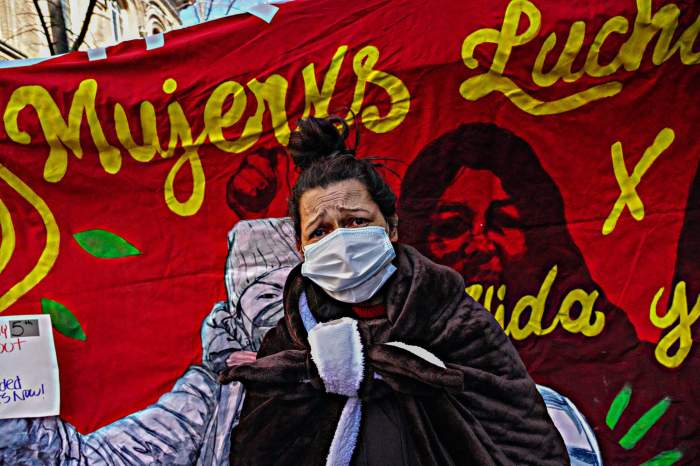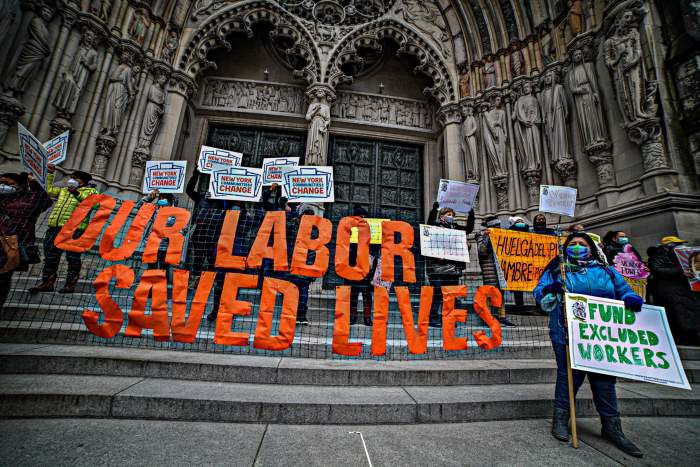Hunger strikers break 23 day fast in epic fashion after $2.1 billion is added to the New York State budget for excluded workers.
It was akin to a scene described in the bible on April 7. Tables had been erected below the Washington Square Arch and like holy figures arriving from a religious pilgrimage, the hunger strikers arrived at the victory banquet pushed in wheelchairs. Exhausted and hungry, these excluded workers were welcomed as returning heroes to much applause and fanfare and given gifts such as flowers from New York Public Advocate Jumaane Williams. Seated at the tables they prepared to finally return food to their bodies after a historic fight that will be remembered for a long time to come.
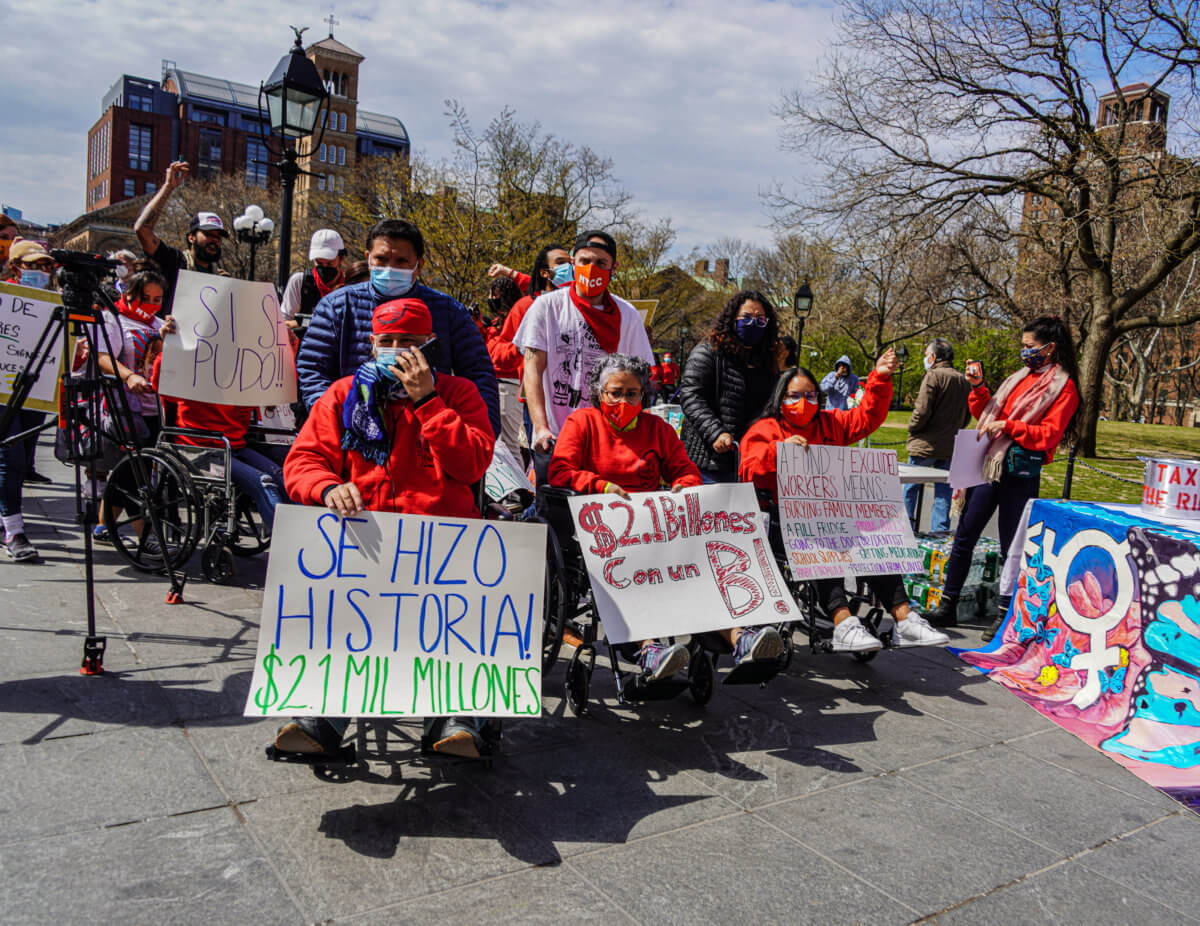
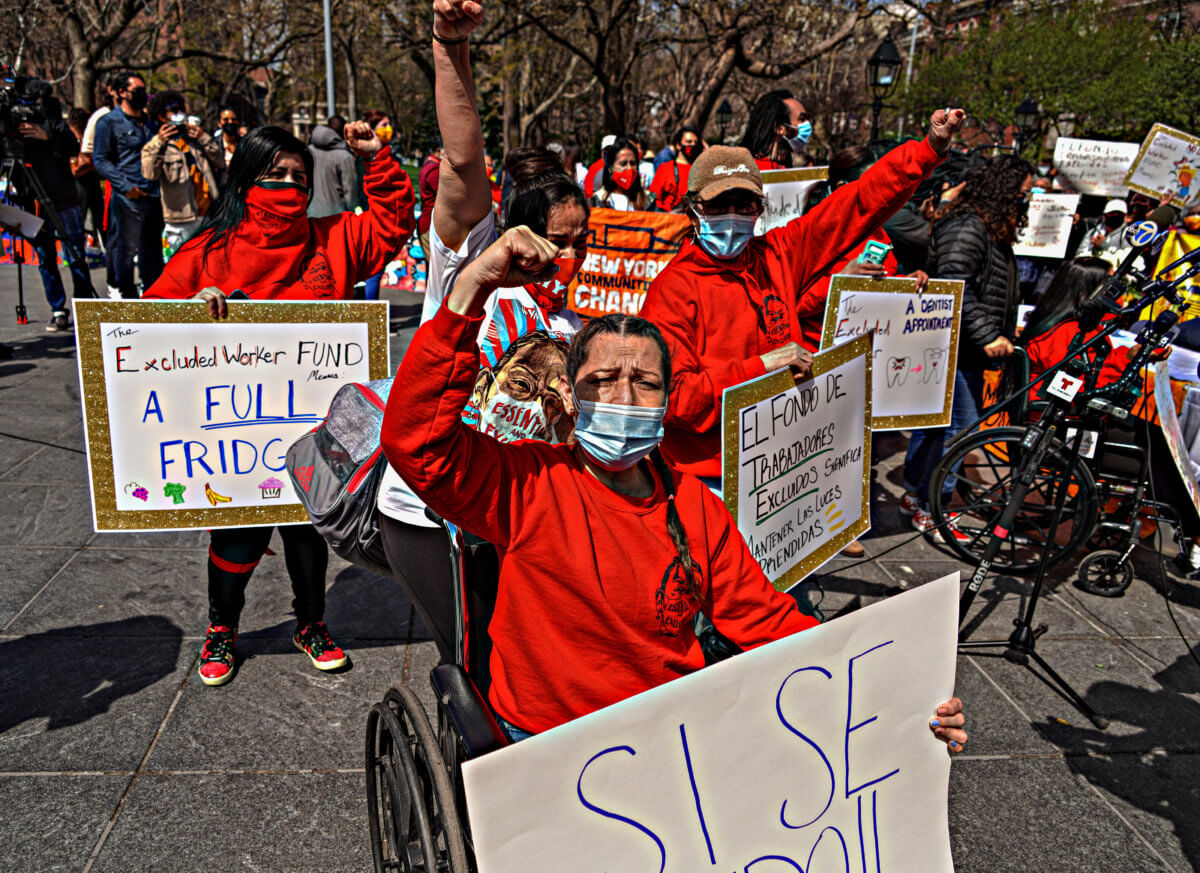
Despite the near month-long fast, workers and those who have supported them throughout the process took in the spotlight before refueling on bananas, fruit and soup by expending their last ounces of energy to speak about why this battle was so important to them and to other excluded workers all over the state.
“There have been 23 days without food. Twenty-three days when I was hungry and in pain. But it hasn’t just been 23 days. It’s actually been decades of pain, the pain of indifference and negligence. Today, our work today has been recognized. Our dignity has been recognized, and our dignity has been lifted by passing this fund,” said Ana Ramirez, a member of New York Communities for Change and an excluded worker, whose remarks were translated from Spanish.
“It is more than $2.1 billion dollars. It is actually a recognition of undocumented workers. This is the future. This is the future that we’re leaving behind for our kids, and a reminder for those who doubted us. This is proof that we did it,” Ramierz added.
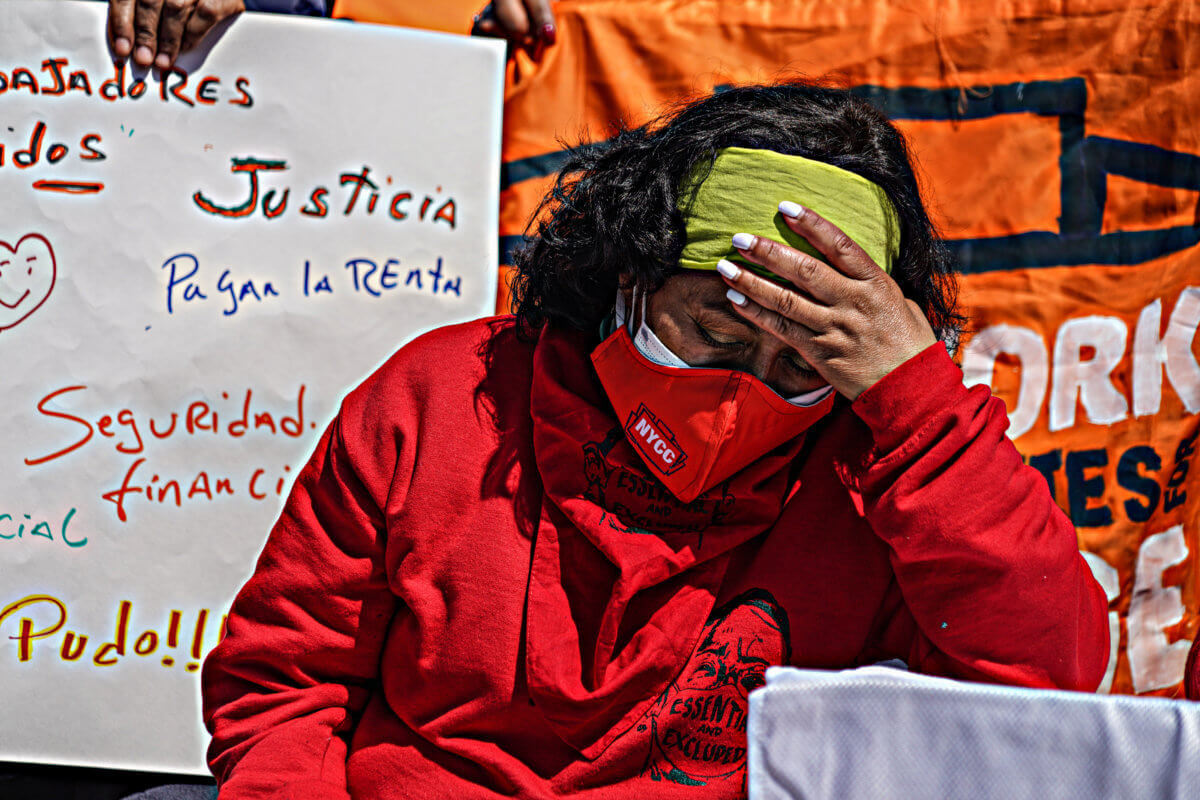
It was clear that the 23 days had taken its toll on the strikers. As the speeches wore on, they held their head in their hands and used signs they had been protesting with these long weeks to shield themselves from the scorching sun. But when the food arrived they became emotional, some rubbed tears from their eyes while others beamed with smiles as they took food to mouth. These mothers, fathers, sons, daughters, brothers and sisters originally demanded $3.5 billion, which they say is on par with what other New Yorkers received in aid, after being omitted from government assistance due to immigration status. Instead of the funds requested, $2.1 billion was allotted to the state budget.
While many in attendance saw this as a victory and celebrated as such with warm embraces and waving flags, Fund Excluded Workers campaign coordinator Bianca Guerrero says that the $2.1 billion is a start and is happy that New York State has become the first in the nation to provide pandemic relief to excluded workers. However, she also warns that she will be watching to ensure that these workers get access to the money while stating that the fiscal budget—which came almost a week after the deadline—is not without its restrictions and still does not benefit incarcerated individuals.
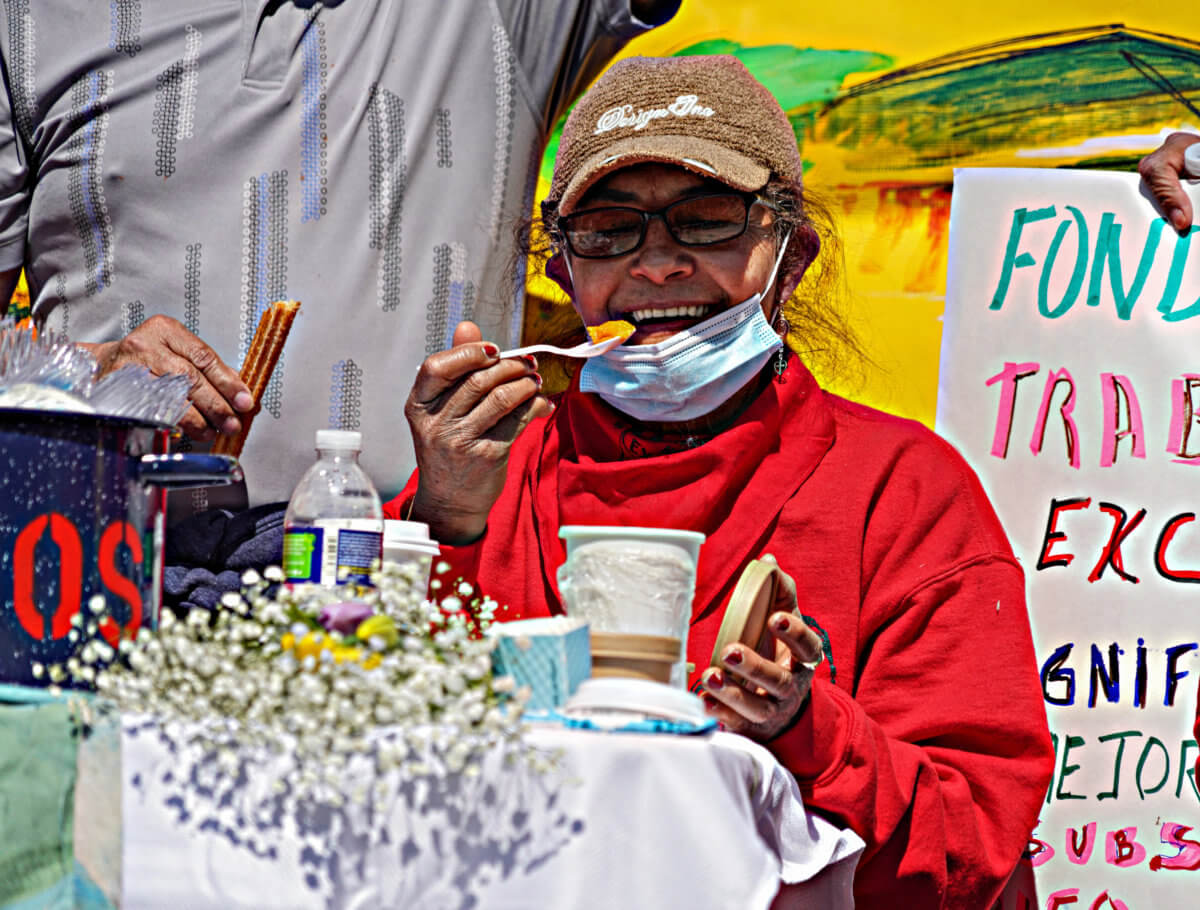
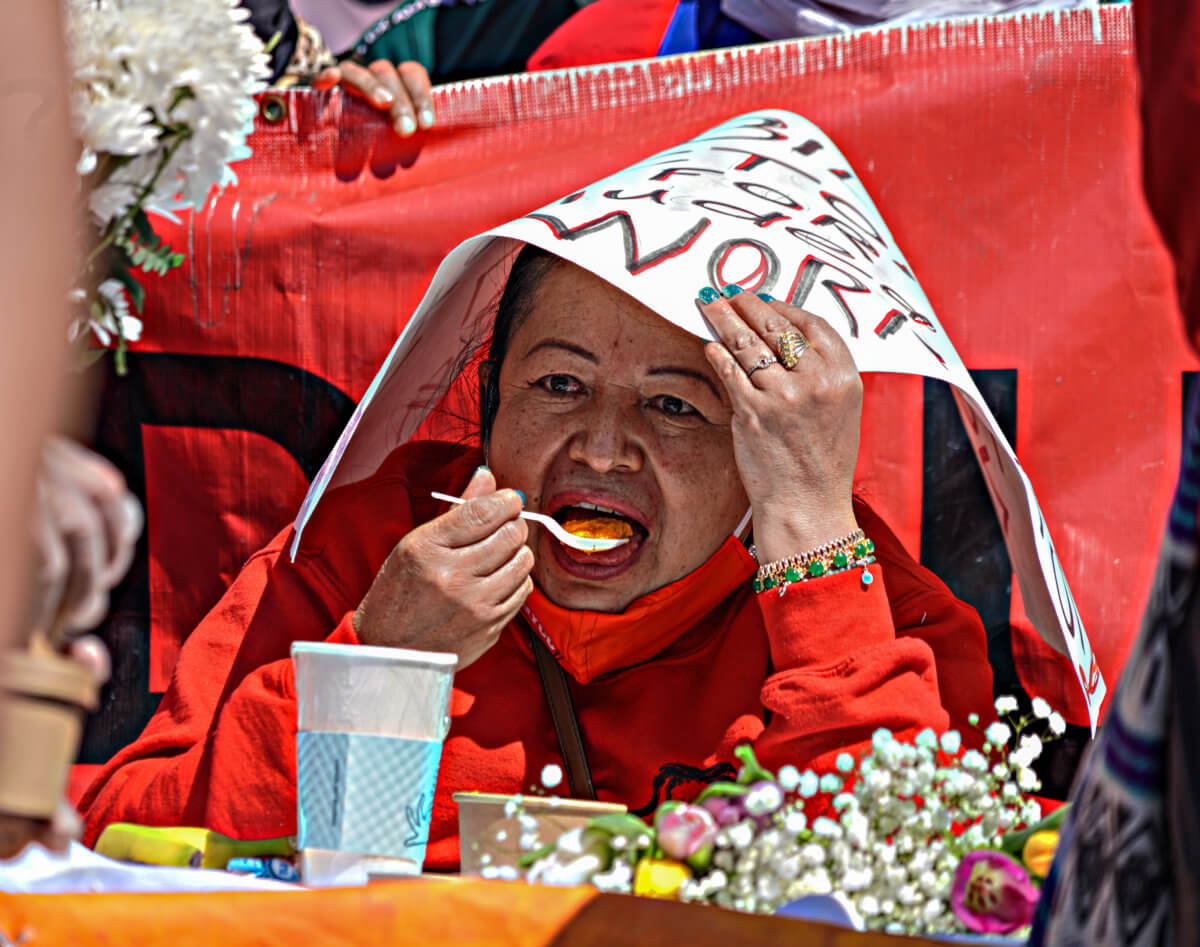
“Let us be clear, New York State will lead the nation with this excluded worker fund. This is a tremendous victory for these workers, but the fund is not perfect. First, our brothers and sisters who were recently released from incarceration are still left behind. That ain’t right. The requirements that are imposed by Governor Cuomo will make it harder for workers to get access to this fund. That ain’t right. We will be watching the implementation of this fund very closely because these workers have not eaten for 23 days but they have been starved for years. Enough is enough,” Guerrero exclaimed adamantly.
The importance of this day was not lost on Felipe Idrovo, an excluded worker who also participated in the “Fast for the Forgotten” hunger strike. Hunger was but one of many traumas Idrovo has faced over the last year. After losing both his brother and father to COVID-19, his mother saw the traces of malnutrition etched across Idrovo’s face, and begged him to stop. She did not want to lose Idrovo, too. But in Idrovo’s mind, he could not abandon his 23-day protest.
“This fight is not just for us who are here, but for everyone who has been supporting us. This country is known for democracy for liberties, but the way we get them is by fighting in the streets and demanding what’s ours. We will continue to fight for many more years to come.”
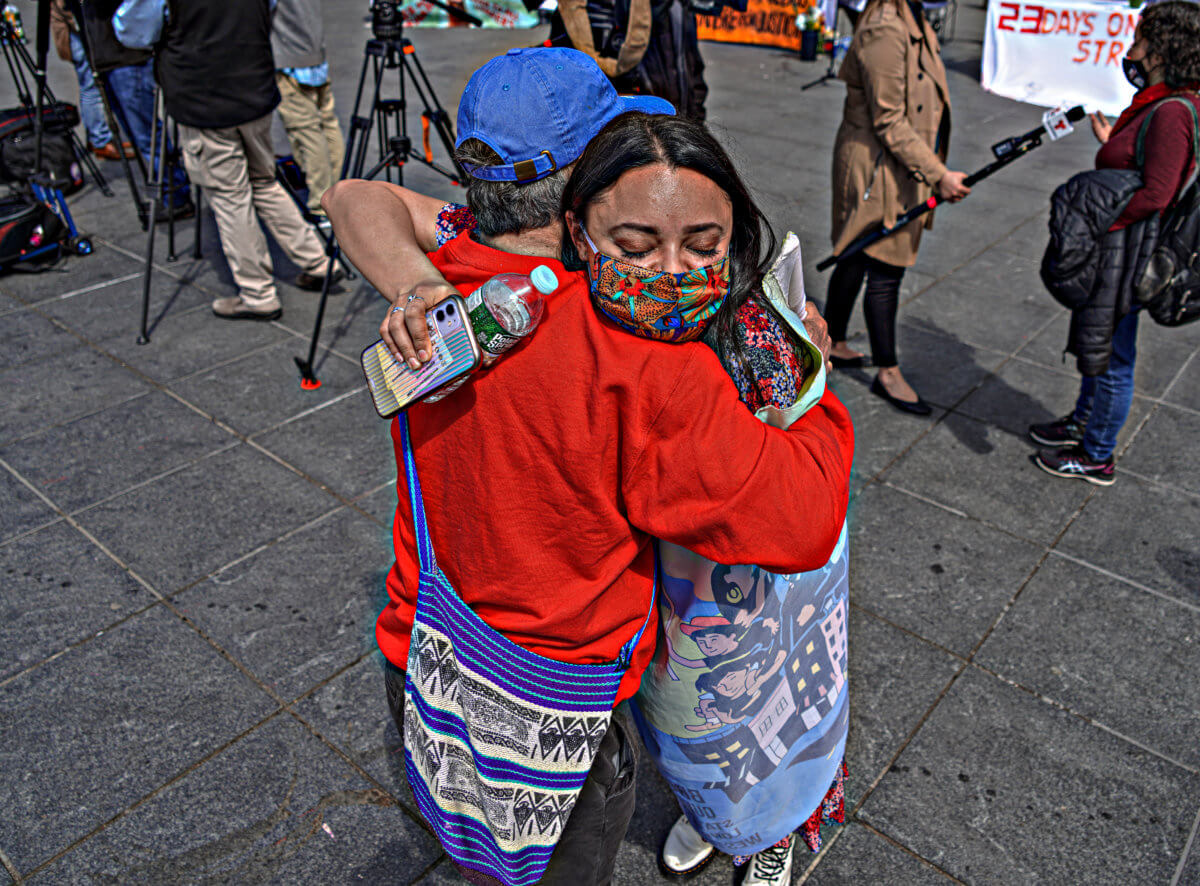
Throughout the celebration speakers reminded onlookers of the historic nature of this win and were told that it will send ripples of inspiration throughout the country. In fact, as April 7th marked the end of this hunger strike it also marked day one that New Jersey residents began their own hunger strike for excluded workers.
